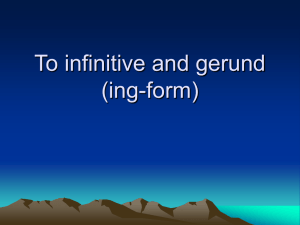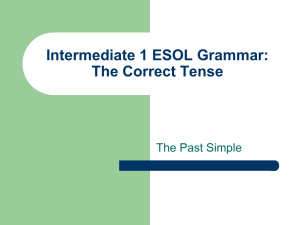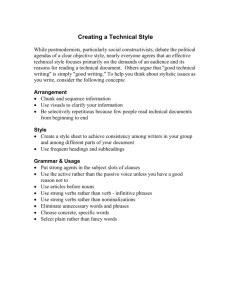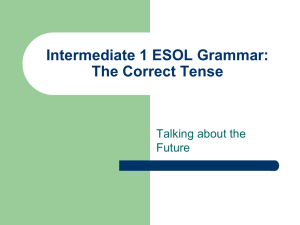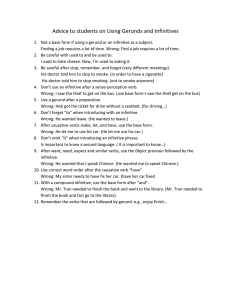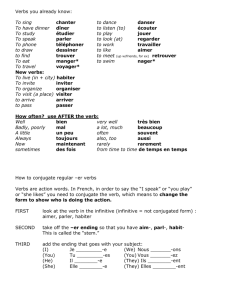Verbs of Perception
advertisement
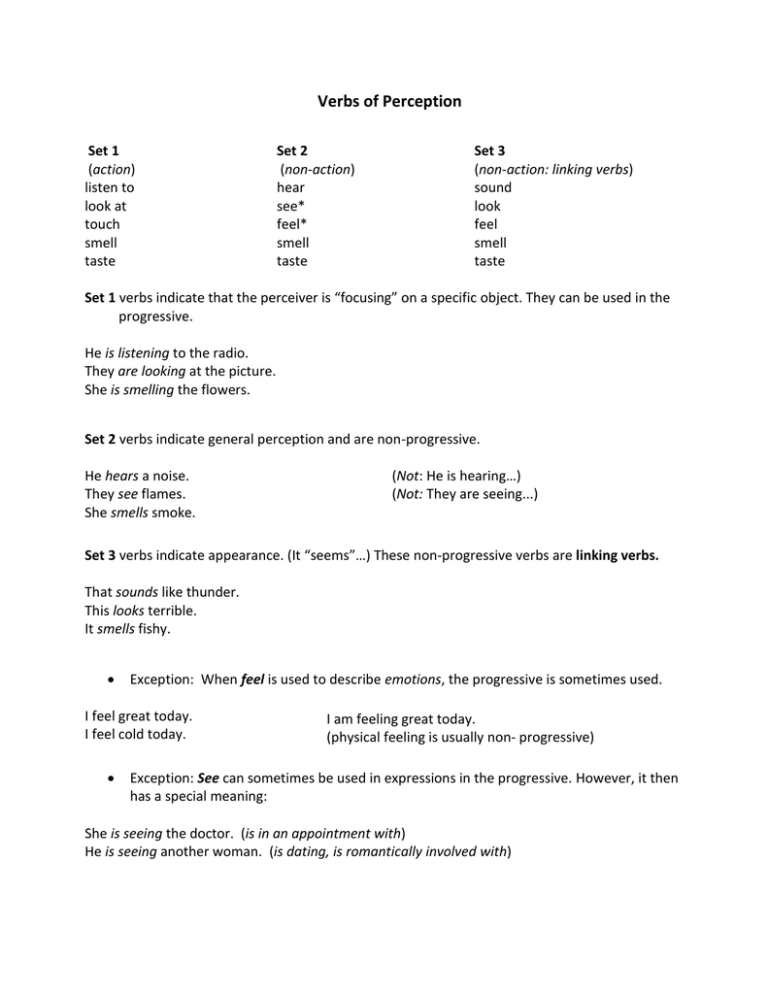
Verbs of Perception Set 1 (action) listen to look at touch smell taste Set 2 (non-action) hear see* feel* smell taste Set 3 (non-action: linking verbs) sound look feel smell taste Set 1 verbs indicate that the perceiver is “focusing” on a specific object. They can be used in the progressive. He is listening to the radio. They are looking at the picture. She is smelling the flowers. Set 2 verbs indicate general perception and are non-progressive. He hears a noise. They see flames. She smells smoke. (Not: He is hearing…) (Not: They are seeing...) Set 3 verbs indicate appearance. (It “seems”…) These non-progressive verbs are linking verbs. That sounds like thunder. This looks terrible. It smells fishy. Exception: When feel is used to describe emotions, the progressive is sometimes used. I feel great today. I feel cold today. I am feeling great today. (physical feeling is usually non- progressive) Exception: See can sometimes be used in expressions in the progressive. However, it then has a special meaning: She is seeing the doctor. (is in an appointment with) He is seeing another woman. (is dating, is romantically involved with) Special Usage of Certain Verbs of Perception Some verbs of perception (see, look at, hear, listen to, and feel, along with watch and sense) can be used with objects followed by an infinitive without to. They can also be followed by a gerund. verb of perception + object + infinitive without to -or- verb of perception + object + gerund Note the examples below: We heard you leave. (Correct: The emphasis is on our hearing.) We heard you leaving. (Correct: The emphasis on your leaving.) We heard you to leave. (Incorrect! The infinitive with to is impossible here!) Other examples: I saw her go. Look at that man run! Sylvester listened to the canary sing. We watched them play basketball. We watched them playing basketball. The infinitive without to (= the zero infinitive) is used after: 1) verbs of perception, (e.g. see, hear, feel) with the pattern verb + object + zero infinitive a. He saw her fall from the cliff. b. We heard them close the door. c. She felt the spider crawl up her leg. 2) the verbs 'make' and 'let', with the pattern make/let + object + zero infinitive a. Her parents let her stay out late. b. Don't make me study that boring grammar book! 3) the verb help, with the pattern help + object + infinitive with or without to The teacher helped me find the answer. The teacher helped me to find the answer.
